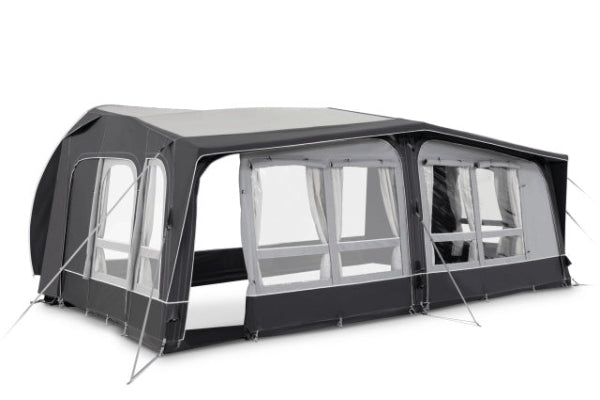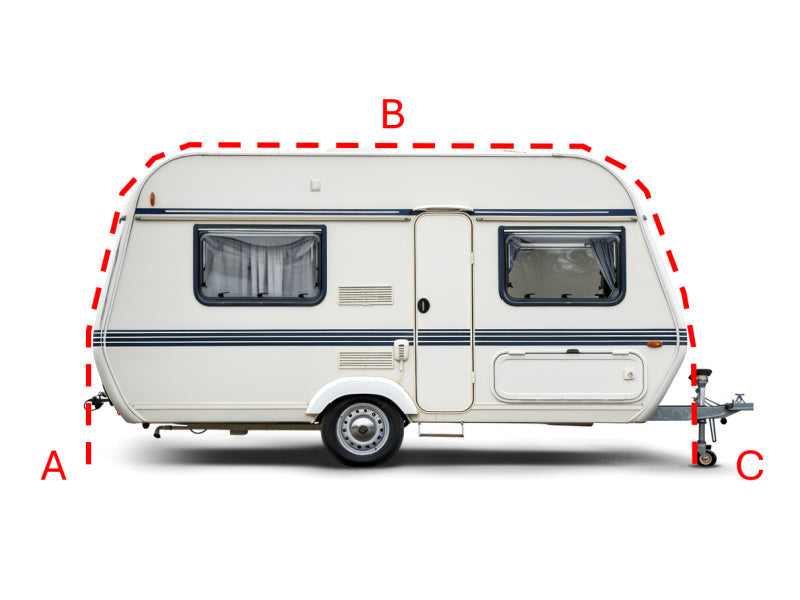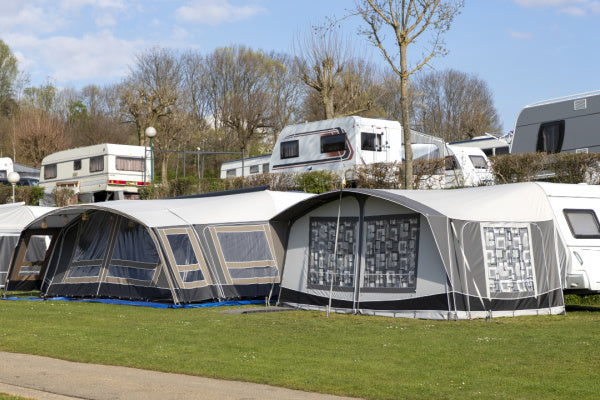Should Mud Flaps Go Inside or Outside of an Awning?
Puzzled about whether mud flaps should go inside or outside your caravan awning? Here's the short answer: they typically go outside to catch debris and water effectively. But wait - there's more to consider! Your specific setup and local weather could make inside placement better. Let's explore why.

Mud Flap Positioning
Picture a rainy day at a campsite. Water splashes everywhere, mud splatters up from passing vehicles, and dirt seems to find its way onto every surface. This is where proper mud flap positioning becomes essential for protecting an awning investment.
The debate over mud flap placement has sparked countless discussions among caravan enthusiasts and outdoor adventurers. While some swear by inside mounting, others advocate firmly for external positioning. Let's dive into the nitty-gritty details of this seemingly simple yet crucial decision.
Purpose of Mud Flaps
Think of mud flaps as the bouncers at an exclusive club - they're there to keep the unwanted elements out. These sturdy barriers stand guard against an onslaught of environmental challenges that could potentially damage an awning system.
Modern mud flaps come in various materials, each designed for specific conditions. Heavy-duty rubber compounds offer excellent durability in harsh environments. Flexible polymer blends provide superior water resistance while maintaining their shape. Metal variants deliver maximum protection against flying debris.
Protecting the Awning from Mud and Spray
Road spray presents a constant threat to awning integrity. Without proper protection, tiny particles of dirt and grit can gradually wear away at awning fabric. Water accumulation leads to mould growth and material deterioration.
Mud flaps create a defensive shield that diverts these harmful elements away from vulnerable awning components. Their strategic placement interrupts the natural trajectory of water spray and debris, forcing these elements downward and away from the protected area.
Consider the science behind water spray patterns. When vehicles move at speed, they create a vortex effect that sends water and debris flying in predictable patterns. Understanding these patterns helps explain why proper mud flap positioning matters so much.

Recommended Position
After extensive testing and real-world experience, industry experts have reached a clear consensus on optimal mud flap placement. While individual circumstances might occasionally dictate otherwise, there's a standard approach that proves most effective in most situations.
The positioning debate isn't just about personal preference - it's about maximising protection while minimising potential drawbacks. Environmental factors, usage patterns, and maintenance requirements all play crucial roles in determining the ideal setup.
Typically Mounted on the Outside of the Awning
External mounting has emerged as the preferred method for several compelling reasons. This positioning creates an initial barrier against environmental threats before they can reach the awning structure itself.
The benefits of external mounting include:
-
Superior water deflection capabilities
-
Enhanced debris protection
-
Improved airflow characteristics
-
Better accessibility for maintenance
-
Reduced risk of moisture trapping
External positioning allows natural air circulation, which helps prevent mould and mildew formation. This ventilation benefit alone often tips the scales in favour of outside mounting.
Weather patterns influence the effectiveness of external positioning. In areas with heavy rainfall, outside-mounted flaps provide better water management. Regions prone to strong winds might require additional securing measures, but the basic principle remains sound.
Installation Considerations
Proper installation transforms a good mud flap setup into an excellent one. The process requires attention to detail and consideration of multiple factors that affect long-term performance.
Key installation factors include:
-
Material compatibility between components
-
Proper sealing techniques
-
Hardware selection and placement
-
Structural support requirements
-
Maintenance access planning
Weather resistance plays a crucial role in installation decisions. All mounting points need proper sealing to prevent water intrusion. Hardware choices should prioritise corrosion resistance and durability.

Installation height affects performance significantly. Too high, and protection becomes compromised. Too low, and ground clearance issues arise. Finding the sweet spot requires careful measurement and consideration of typical usage patterns.
Seasonal changes demand attention during installation planning. Materials expand and contract with temperature variations. Proper allowance for these movements prevents stress on mounting points and extends system longevity.
Professional installation offers several advantages:
-
Expertise in proper positioning
-
Access to specialised tools
-
Knowledge of common pitfalls
-
Warranty protection
-
Time and effort savings
However, many outdoor enthusiasts successfully complete their own installations. Clear instructions, proper tools, and attention to detail make the task manageable for those with basic mechanical skills.
Regular maintenance checks ensure continued effectiveness. Inspect mounting points periodically for signs of wear. Clean accumulated debris regularly. Address any issues promptly to prevent minor problems from becoming major concerns.
Future modifications should be considered during initial installation. Leaving some adjustment capability helps accommodate changing needs or correcting minor positioning issues discovered through use.
The investment in proper mud flap positioning pays dividends through extended awning life and reduced maintenance requirements. Taking time to understand these principles leads to better protection and more enjoyable outdoor experiences.
Other content you might like:
- How to extend a caravan awning
- Should caravan awning legs be up or down?
- Can you put a caravan awning up in the rain?
- How to stop my caravan awning from sagging?
- How do I stop my awning from blowing away?
- Can caravan awnings cause problems?
- Can caravan awnings cause damp problems?
- Can caravan awnings affect windows?
- Can caravan awnings affect the environment?
- Can caravan awnings be recycled?





Leave a comment